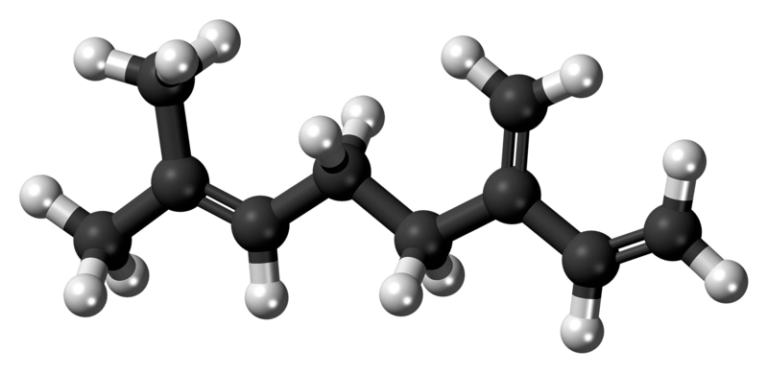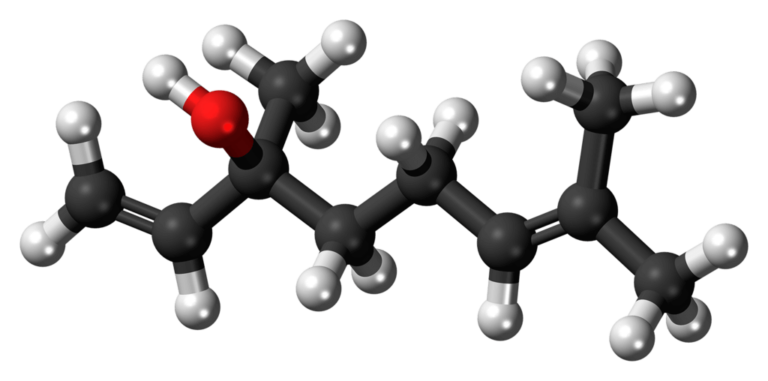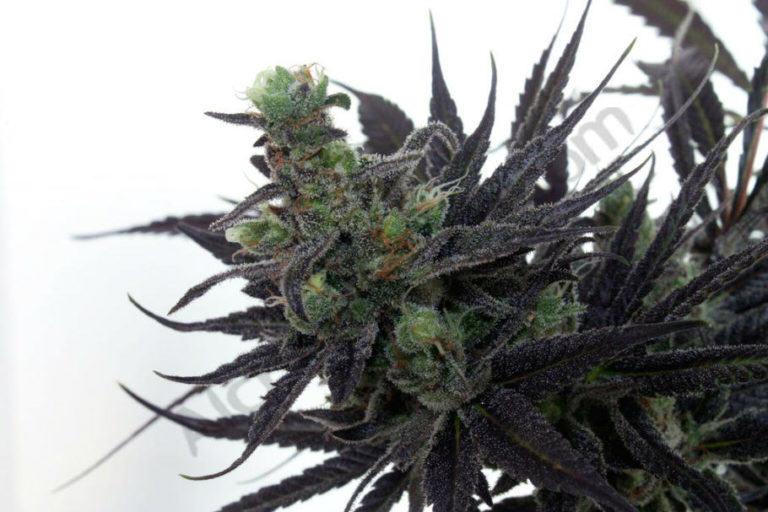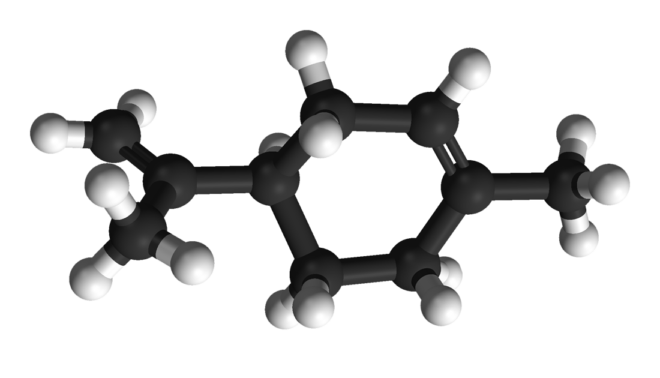Caryophyllene
List of contents
What is caryophyllene?
- Name: Caryophyllene, β-Caryophyllene
- Formula: C15H24
- IUPAC name: 4,11,11-trimethyl-8-methylene-bicyclo[7.2.0]undec-4-ene
- Molecular mass: 204.36 g/mol
- Boiling point: 130°C (403K)
- Vaporization temperature: 199ºC
First synthesized in the laboratory in 1964 by EJ Corey, caryophyllene (also called β-caryophyllene) is a bicyclic sesquiterpene found in various plants, including basil, thyme, rosemary, oregano, hops, pepper, and, of course, also in cannabis. It is known for its anti-inflammatory and antioxidant properties, and research has been focusing on it in relation to various health benefits.
In fact, caryophyllene is one of the most common terpenes found in marijuana, along with other terpenes like limonene, linalool, and pinene. As you probably already know, terpenes are volatile compounds found in the trichome glands of cannabis, responsible for the aroma and flavor of the plant. Let's delve a little into the properties and effects of this interesting compound!
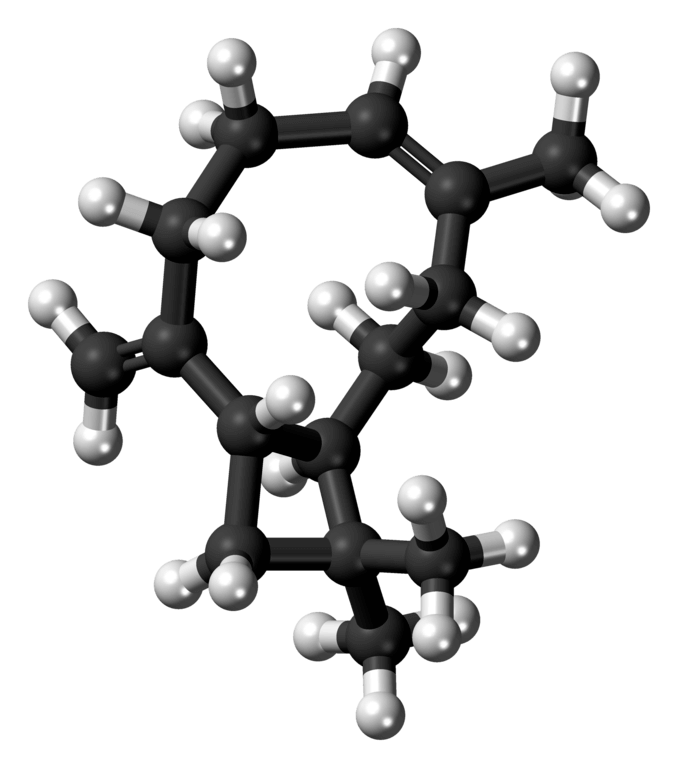
Synthesis route of caryophyllene
The synthesis of caryophyllene is a truly complex process that involves several enzymes and metabolic pathways. This circuitous pathway begins with the conversion of a metabolite called mevalonate to two different compounds, isopentenyl pyrophosphate (IPP) and dimethylallyl pyrophosphate (DMAPP), by the enzyme mevalonate kinase.
The enzyme geranyl pyrophosphate synthase (GPPS) then combines IPP and DMAPP to form geranyl pyrophosphate (GPP), which is then converted to farnesyl pyrophosphate (FPP) by the enzyme farnesyl pyrophosphate synthase (FPPS). FPP is then converted to squalene by the enzyme squalene synthase. Squalene is then converted to carotenoids, including caryophyllene, through various enzymes and metabolic pathways.
In general, you will hear about:
- Alpha-caryophyllene: also called humulene, is present in cannabis and also in other plants such as hops.
- Beta-caryophyllene: found in large amounts, for example, in black pepper.
- Caryophyllene oxide: Present in eucalyptus among other plants, it is the substance that anti-drug dogs detect.

Caryophyllene oxide
If you have ever heard of this terpene before, you probably know that it is responsible for the identification of cannabis by drug detection dogs (Opdyke, 1983; Stahl & Kunde, 1973). However, and to be more precise, we must point out that it is caryophyllene oxide that sets off the alarms of faithful drug-sniffing dogs, who usually have no problem detecting its scent.
In addition, caryophyllene oxide is used as a broad-spectrum antifungal product to repel pests in all types of crops, although insecticidal properties have also been observed. As if that were not enough, these antifungal properties have also been observed in clinical studies of onychomycosis, a chronic fungal infection that attacks the nails. Eucalyptus trees are a rich source of this compound.
Caryophyllene aroma
The aroma of this terpene is fresh, herbaceous and with citrus, floral and spicy notes (it is, for example, responsible for the aroma of black pepper). This pleasant combination of fragrances means that it is often used in the perfumery and cosmetics industry to improve the smell of personal care products, providing that characteristic "clean smell" that surely sounds familiar to you.
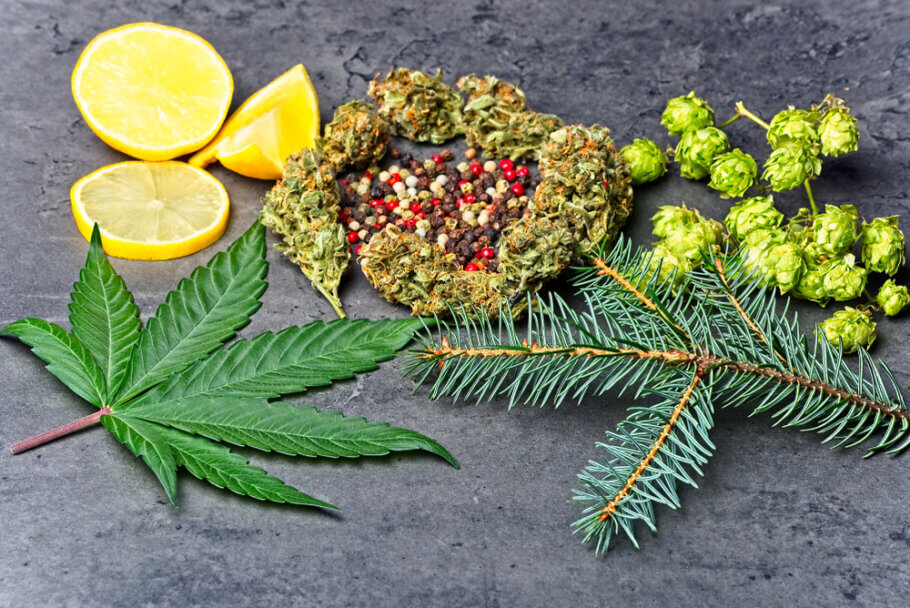
Caryophyllene properties
Without a doubt, one of the main benefits of caryophyllene - and one of the most studied so far - is its ability to reduce inflammation. It has been shown to have an anti-inflammatory effect similar to non-steroidal anti-inflammatory drugs (NSAIDs) such as ibuprofen but without the common gastrointestinal side effects of these drugs. Caryophyllene has also been shown to help reduce inflammation in chronic conditions such as arthritis, asthma, and inflammatory bowel disease.
In addition to its anti-inflammatory properties, caryophyllene also has antioxidant properties. Antioxidants help protect cells from cell damage caused by free radicals, and caryophyllene has been shown to help prevent cell damage in the brain and cardiovascular system. Caryophyllene has also been shown to help improve immune system function and prevent tumor formation.
Another possible benefit of caryophyllene is its ability to improve mental health. It has been shown to help reduce stress and anxiety and has also been researched in relation to depression and Alzheimer's disease.
Regarding its use, and leaving aside tinctures or other extracts that can be made at home, caryophyllene can be found on the market as a supplement in the form of essential oil or capsules. It can also be used as an ingredient in cosmetics and skin care products due to its anti-inflammatory and antioxidant properties.
Green Dragon: making cannabis tincture
Today we're going to show how to make an alcoholic drink that's rich in cannabinoids, also known as Green Dragon. Making a tincture of this type is an easy and simple process, and produces a high-quality end result. Read on for step-by-step instructions on how to make it!
In summary, it is a terpene known for its anti-inflammatory and antioxidant properties and has been investigated for several health benefits, including reducing inflammation in chronic diseases, preventing cell damage, improving mental health, and tumor prevention. It can be used in supplements and personal care products. However, it is important to mention that more research is needed to confirm these benefits and determine the appropriate dosage.
-----------------------------------------------------
References:
- Lead Compounds from Medicinal Plants for the Treatment of Neurodegenerative Diseases, Christophe Wiart
- Cannabis Pharmacology: The Usual Suspects and a Few Promising Leads, Ethan B.Russo, Jahan Marcu
- β-Caryophyllene: A Sesquiterpene with Countless Biological Properties, Fabrizio Francomano, Anna Caruso, Alexia Barbarossa, Alessia Fazio
- Beta-caryophyllene is a dietary cannabinoid, Jürg Gertsch, Marco Leonti, Stefan Raduner, Ildiko Racz


































































